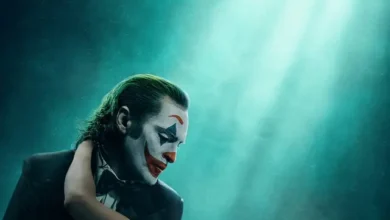The Greatest Antagonist: The Legacy of The Joker


The Joker is a fractured soul born from society’s neglect, a man who descended into chaos after life’s cruel injustices pushed him over the edge. Behind the twisted grin and haunting laughter lies a reflection of human vulnerability and the thin line between sanity and madness. He embodies the potential for darkness that exists within all of us when hope is lost. Whether driven by trauma, isolation, or a desire to expose life’s absurdity, the Joker’s actions are a desperate rebellion against a world he sees as hypocritical and broken. His existence is a reminder of how fragile the human mind can be — and how easily the right push can turn a person into something unrecognizable.
The greatest joker of all time
Heath Ledger’s Joker in The Dark Knight (2008) is often hailed as the greatest Joker of all time, and for good reason. Ledger’s performance was a masterclass in embodying chaos and psychological terror. He transformed the Joker from a comic book villain into a chillingly realistic agent of anarchy, stripping away any trace of campiness. His Joker was unpredictable, nihilistic, and disturbingly human, driven not by greed or power, but by a desire to tear down the very fabric of society.
Ledger’s dedication to the role was legendary. He reportedly isolated himself for weeks, crafting the Joker’s eerie voice, sinister mannerisms, and that unsettling, ever-licking smile. The result? A character that felt deeply unsettling and authentically dangerous. Lines like “Why so serious?” and “It’s all part of the plan” became instant cultural touchstones.
His portrayal earned him a posthumous Academy Award for Best Supporting Actor, a testament to the transformative power of his performance. Ledger’s Joker wasn’t just a villain; he was a mirror to humanity’s potential for chaos, a reminder of how thin the veneer of order truly is.
Character born

The first Joker in movie
Cesar Romero’s Joker, brought to life in the 1960s Batman TV series, is often remembered as the first live-action portrayal of the iconic villain. Unlike the darker interpretations that followed, Romero’s Joker was a playful, campy trickster who took pleasure in creating chaos just for the fun of it. His Joker wasn’t motivated by deep psychological wounds or grand plans but by a love for mischief and a need to outwit Batman at every turn.
What made Romero’s portrayal stand out was his commitment to playing the Joker as a larger-than-life, almost cartoonish character. His vibrant purple suit, green hair, and that ever-present grin became instantly recognizable, and his maniacal laugh was both entertaining and unsettling in its own way. Romero’s Joker was always scheming, but never out of malice — rather, it was for the sheer joy of causing havoc.
His refusal to shave his mustache, which remained visible beneath the Joker’s white makeup, only added to the quirky charm of his character. Romero’s Joker wasn’t about fear or terror, but about spectacle, and he left a lasting mark on how we view the Clown Prince of Crime. For many, he’s still the embodiment of fun and unpredictable chaos in Gotham.
What is joker’s real name
The Joker‘s real name has been a subject of mystery and variation across different comic books, films, and TV adaptations. In many versions, his true identity is never fully revealed, adding to the character’s enigmatic and unpredictable nature.
However, in some storylines, a name has been provided:
Jack Napier
In Tim Burton’s 1989 Batman film, the Joker’s real name is Jack Napier, a gangster who falls into a vat of chemicals, which disfigures him and turns him into the Joker
Arthur Fleck
In the 2019 film Joker, directed by Todd Phillips, the character’s real name is Arthur Fleck, a struggling comedian who descends into madness after being pushed to the edge by society.
In the comics, the Joker’s real name is typically left ambiguous, and he has sometimes been depicted with different identities, further emphasizing his chaotic and elusive nature. The mystery of his name plays into the idea that the Joker could be anyone, making him a more terrifying figure.
Batman and Joker
Batman and the Joker’s relationship is built on a deep, almost tragic symmetry. Batman represents justice, order, and control, while the Joker is the embodiment of chaos, anarchy, and destruction. They constantly challenge each other’s worldviews, but their bond goes beyond a simple hero-villain dynamic. The Joker thrives on pushing Batman to his breaking point, trying to prove that even someone as disciplined as him can be undone by chaos. In contrast, Batman refuses to succumb to the Joker’s philosophy, determined to maintain his sense of justice no matter what.
What makes their connection so compelling is the way they mirror each other. Both were shaped by traumatic events—Batman’s parents’ murder, and the Joker’s complex and often tragic origin. But while Batman uses his pain to drive him toward justice, the Joker uses his to spread misery and madness. Despite their differences, they understand each other on a deep level, and in some ways, they can’t exist without the other. Batman needs the Joker to prove his commitment to justice, and the Joker needs Batman to challenge his belief that the world is inherently chaotic.
Their conflict is not just physical; it’s a battle of ideas, one that speaks to the fragility of the human mind and the delicate line between order and madness.
